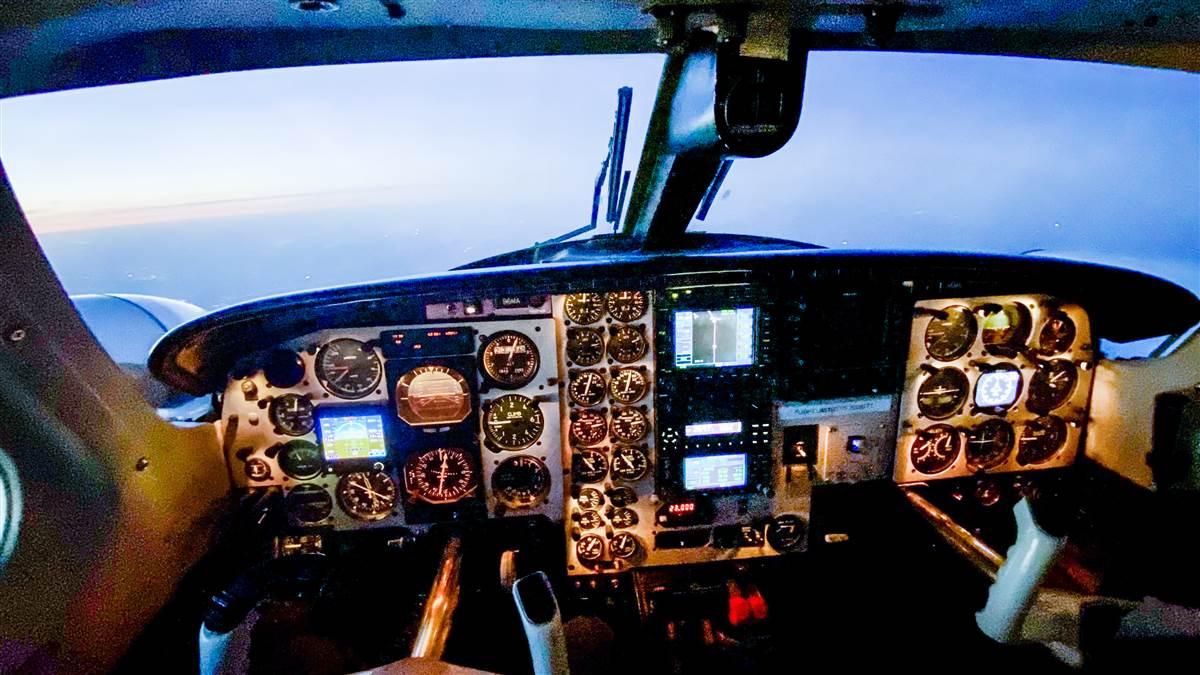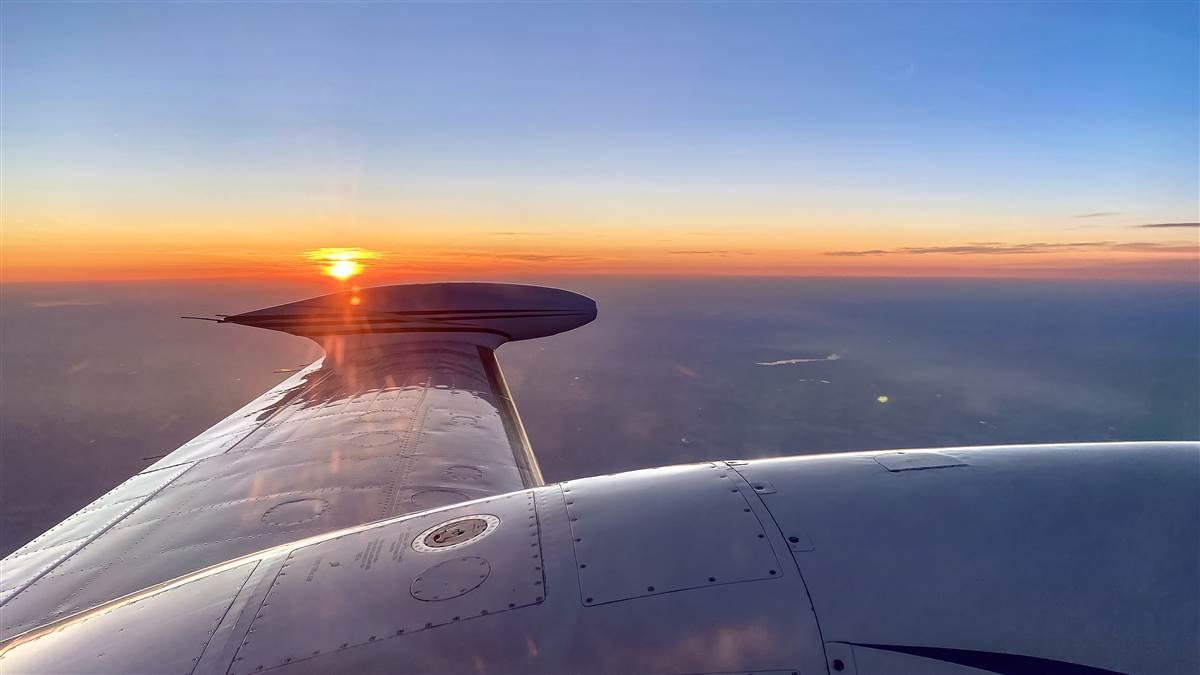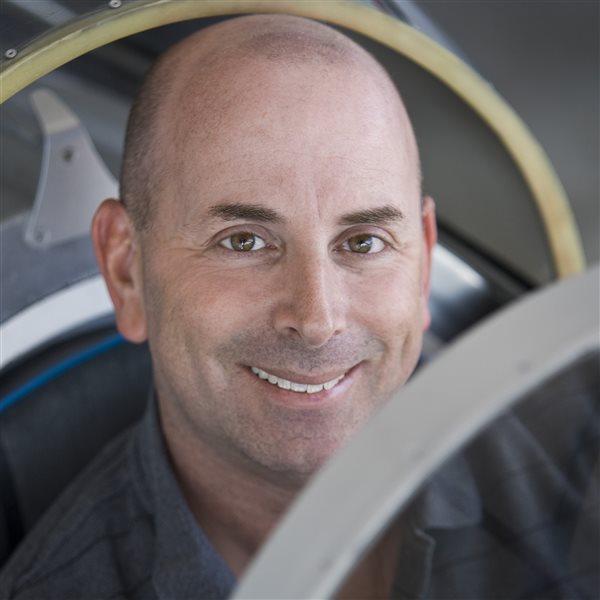Twilight oversight
Daytime training lapse
My checkout in this old but new-to-me turboprop had included lots of simulated engine failures and systems malfunctions—but now that I was on my first single-pilot trip, the gaps in my overall knowledge started to reveal themselves.

Unlike the daytime training I’d completed a week prior, this long, multi-leg trip extended into the night. As the sun began setting, I dug a flashlight out of my flight bag and put a headlamp on the vacant seat next to me for use just in case.
Then I began searching for the panel lighting switch—and searched and searched.
This 1978 Cheyenne’s analog instrument panel is dotted with eyebrow lights meant to shine on individual instruments, so there had to be a way to turn them on. But how to accomplish that straightforward task escaped me.
I found an overhead light that illuminates the entire cockpit. But turning it on creates a great deal of reflection that makes it nearly impossible to see outside at all. I was about 90 minutes from my destination, a nontowered airport in the Mid-Atlantic, so there was plenty of time to answer this increasingly bothersome lighting question.
The engines hummed with the props synchronized and the autopilot kept the airplane on course at 23,000 feet while I examined every inch of the instrument panel for an elusive lighting switch.
Using my flashlight’s narrow beam, I panned slowly across the sub-panel, then the main panel. No luck. I checked the overhead panel where the switches for the external lights are logically placed together yet still came up with nothing.
I briefly considered landing the airplane to regroup. It had already been a very long day, and I was alone and expecting to end at a hotel somewhere. Why not Florence, South Carolina, the next airport along my flight path? I dismissed the idea because it was already dark on the ground even though twilight lingered at altitude.
Thumbing through the Cheyenne manual didn’t help, and continuous light chop made the dog-eared book difficult to read. Washington Center was relatively quiet, and I thought about posing the question to other pilots on the frequency to get their advice. Yet the odds of someone knowing about switch positions on this 37-year-old twin seemed remote. And the humiliation factor of asking such a silly question semi-publicly was real.
On the positive side of the ledger, I had a fully charged LED flashlight, an iPhone with a built-in white light, and a headlamp that illuminated most of the panel in a soothing red glow. Also, the digital standby instrument displaying airspeed, altitude, and attitude had an internal standby battery. Wasn’t that enough? The weather was clear and a million, after all.
Mostly, however, I was disappointed in myself for failing to ask about cockpit lighting during my multi-hour aircraft checkout. It never occurred to me to seek out this vital bit of information. Since that was painfully evident, what other important questions had I not been curious enough to ask?
Then, I finally spotted an unlabeled, black rheostat hanging near the compass just above the windshield. Turning the knob bathed the many round dials on the panel in glorious incandescence. Halle-freaking-lujah!

Now that I’d discovered the rheostat, of course, its presence was obvious. How could I have overlooked it for so long? Two more rheostats were placed next to it although turning them seemed to accomplish nothing.
The approach and landing with the fully visible panel were uneventful. Putting the airplane away after flying a full day, and part of the night, I felt a mix of accomplishment and disappointment.
The trip itself had gone well, and there were no big surprises during eight flight hours that included four takeoffs and landings. The repetitions were helpful in drilling the long series of steps required for getting the 1,000-horsepower twin up and down, and that muscle memory would help for future flights in the idiosyncratic old bird.
But not knowing how to activate the cockpit lights was alarming because it showed undeniable ignorance. Some airplanes require a period of supervised initial operating experience after a pilot gets a rating, and small but critical items like this one are part of the reason.
Aircraft checkouts naturally focus on the big threats: engine failures, loss of pressurization, emergency landing gear extensions. That’s understandable and correct. But focusing on big-ticket items makes it easy to exclude smaller stuff—yet little things have a way of growing more prominent in flight.
It’s often said that a pilot certificate is a license to learn, and that’s especially true of advanced ratings. More capable airplanes bring more complex systems that require more study and deeper knowledge.
Also, following the march of technology into newer, more automated aircraft is somehow far easier than stepping back in time. The Cheyenne’s hodgepodge analog panel, ancient systems, and the sheer physicality of flying it are demanding in ways that more modern airplanes aren’t. Ultimately, meeting those demands can be satisfying—but that doesn’t happen overnight.
Or maybe it does.



